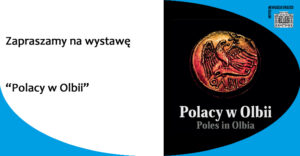
Zapraszamy na bezpłatną wystawę "Polacy w Olbii"
01 lutego 2023
Zbyszekcoments closed
Boris Magomedov lecture from the conference “Olbia in the Hunnic period”
06 grudnia 2022
Zbyszekcoments closed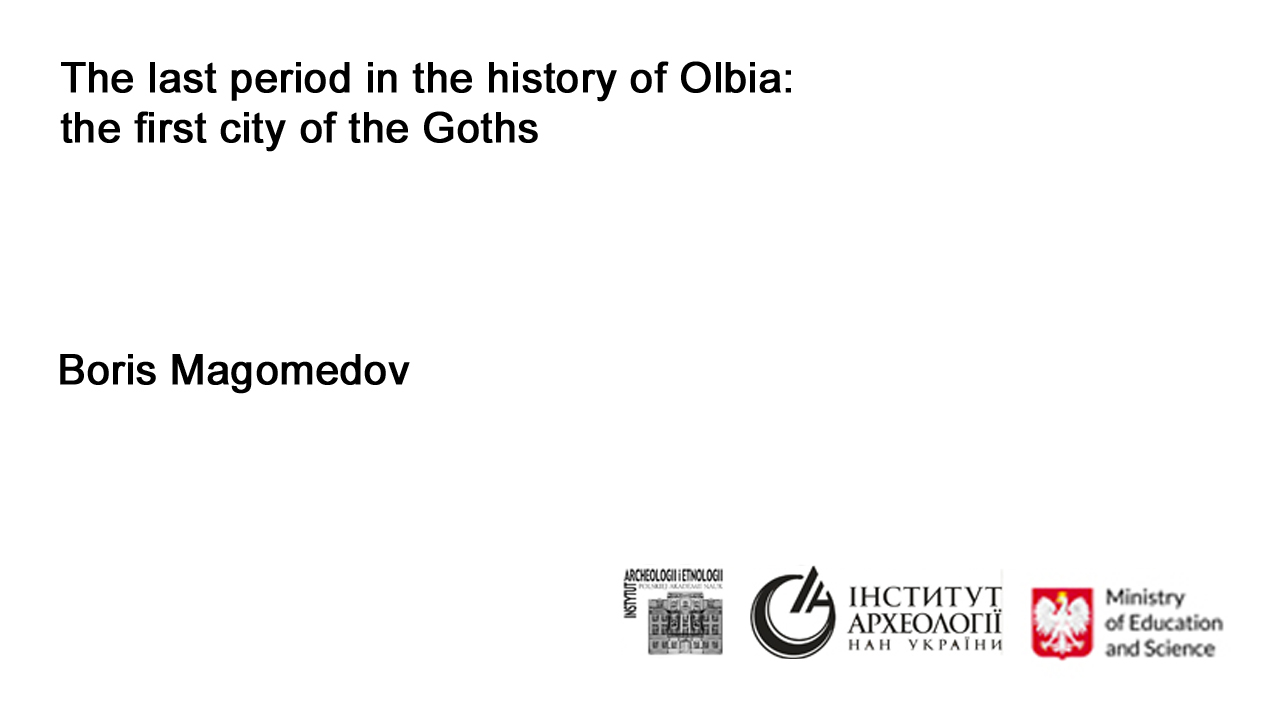
Na kanale Archeo.TV jest już dostępny 14 referat z konferencji "Olbia in Hunnic Period", która odbyła się 5-6 listopada 2021 roku ![]()
Institute of Archaeology and Ethnology of the Polish Academy of Sciences
and
Institute of Archaeology of the National Academy of Sciences of Ukraine
presents a lecture from a scientific conference:
Olbia in Hunnic Period
organized at November 5–6, 2022
Author: Boris Magomedov
Title: The last period in the history of Olbia: the first city of the Goths
Abstract: Artifacts of Chernyakhov culture were found in Olbia already in the mid-20th century, enabling conclusions concerning the presence of a Chernyakhov population in the city in the late Roman period (Magomedov 1985; 2001). Significantly more finds have come from recent excavations, including the work of the Ukrainian–Polish expedition in 2016–2021. An analysis of Chernyakhov finds (ceramics, fibulae, combs), as well as dating late antique finds, makes it possible to reconstruct the last period in the city’s history. The Greco-Roman inhabitants left the city around the middle of the 3rd century. A small barbarian population settled Olbia and the neighboring rural settlements at the end of the century. The “Chernyakhovites” displayed an interest in the port of Olbia as a place of trade, but not in the destroyed city, probably until the 370s. The last, brighter phase in the life of the city started at the beginning of the Hunnic period, after 375, and ended together with the decline of Chernyakhov Culture in the first third of the 5th century. After a 100-year hiatus, Olbia was reborn as a small fortified town, trade and crafts center, inhabited by the Goth barbarians. An active program of building works was instigated in the Roman citadel and in the Lower City. The revival of the Citadel accompanied a restoration of the old defensive system on the borders of the former Olbia state (the Kozyrka, Petukhovka, Stanislav and other forts). This is most likely an indication of the existence of one of the early state entities of the Hunnic period—possibly the kingdom of Gesimund, an ally of the Huns—that grew upon the ruins of the Gothic “state of Hermanarich”.
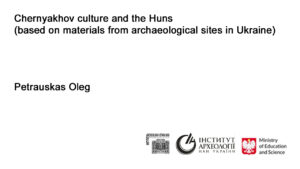
Petrauskas Oleg lecture from the conference “Olbia in the Hunnic period”
29 listopada 2022
Zbyszekcoments closed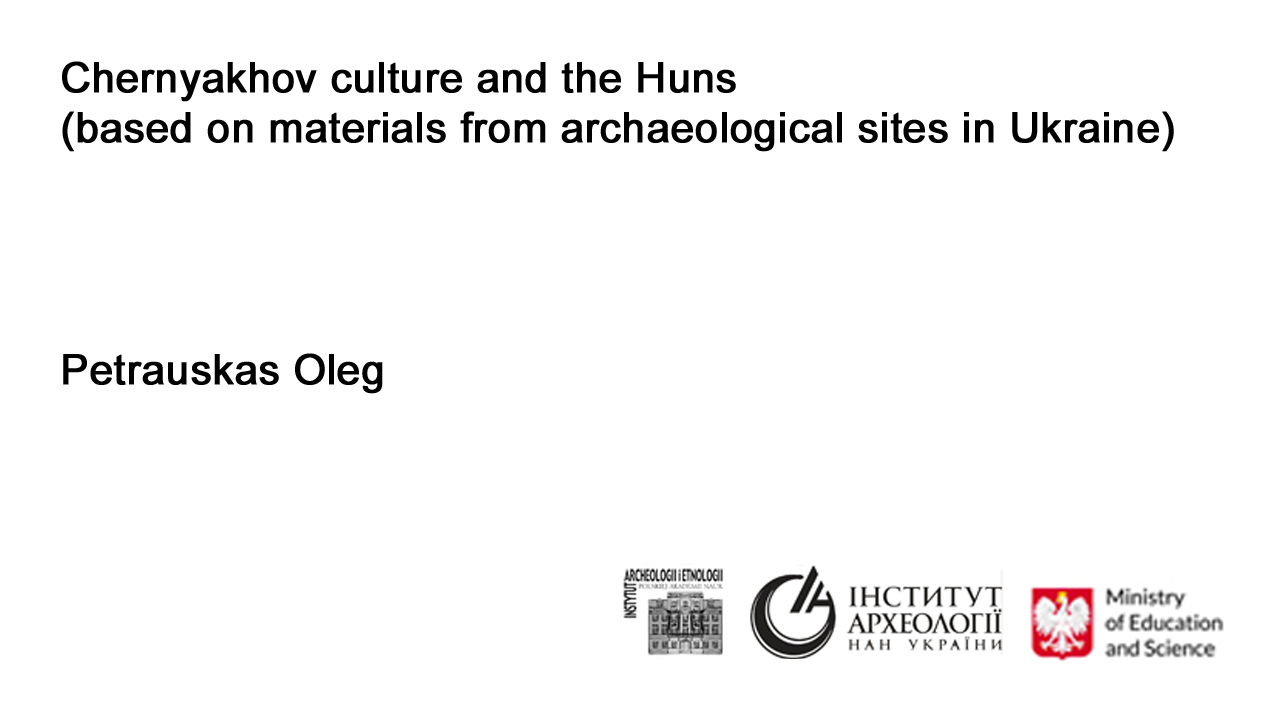
Na kanale Archeo.TV jest już dostępny 13 referat z konferencji "Olbia in Hunnic Period", która odbyła się 5-6 listopada 2021 roku ![]()
Institute of Archaeology and Ethnology of the Polish Academy of Sciences
and
Institute of Archaeology of the National Academy of Sciences of Ukraine
presents a lecture from a scientific conference:
Olbia in Hunnic Period
organized at November 5–6, 2022
Author: Petrauskas Oleg
Title: Chernyakhov culture and the Huns (based on materials from archaeological sites in Ukraine)
Abstract:
The issue of the relations between the Chernyakhiv culture and the Huns is considered based on archaeological data and information from the written sources, principally the writings of Ammianus Marcellinus and Jordanes. The Huns appeared in the Black Sea region at the end of the reign Rex of the Goths Germanarich (between 369–375\376). It corresponds to the end of phase C3 in the relative chronology of eastern Europe antiquities. According to Jordanes, the Ostrogoths stayed in their places of residence after being subjugated by the Huns. This appears to be corroborated by the assemblages of finds representing the Chernyakhiv culture which correspond largely to phases D1 and D2 (about 370–450) of the European relative chronology.
The disappearance of Chernyakhiv culture can be explained only taking into account the polyethnic nature of this formation. For instance, according to the written sources, it took the better part of half a century for the Ostrogoths, one of the components of the Chernyakhiv culture, to migrate to the Roman provinces. The fate of other components of the culture can be reconstructed from archaeological sources. Some of Chernyakhiv culture artifacts (glass cups, buckles, combs, antique imports) can be dated to the end of the 4th and the first half of the 5th centuries. The ethnocultural specificity of late Chernyakhiv culture is mostly associated with the Scythian-Sarmatian and early Slavic components. The disappearance of this culture appears to be the result of a complex set of socio-economic factors.
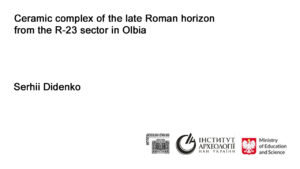
Serhii Didenko lecture from the conference “Olbia in the Hunnic period”
03 listopada 2022
Zbyszekcoments closed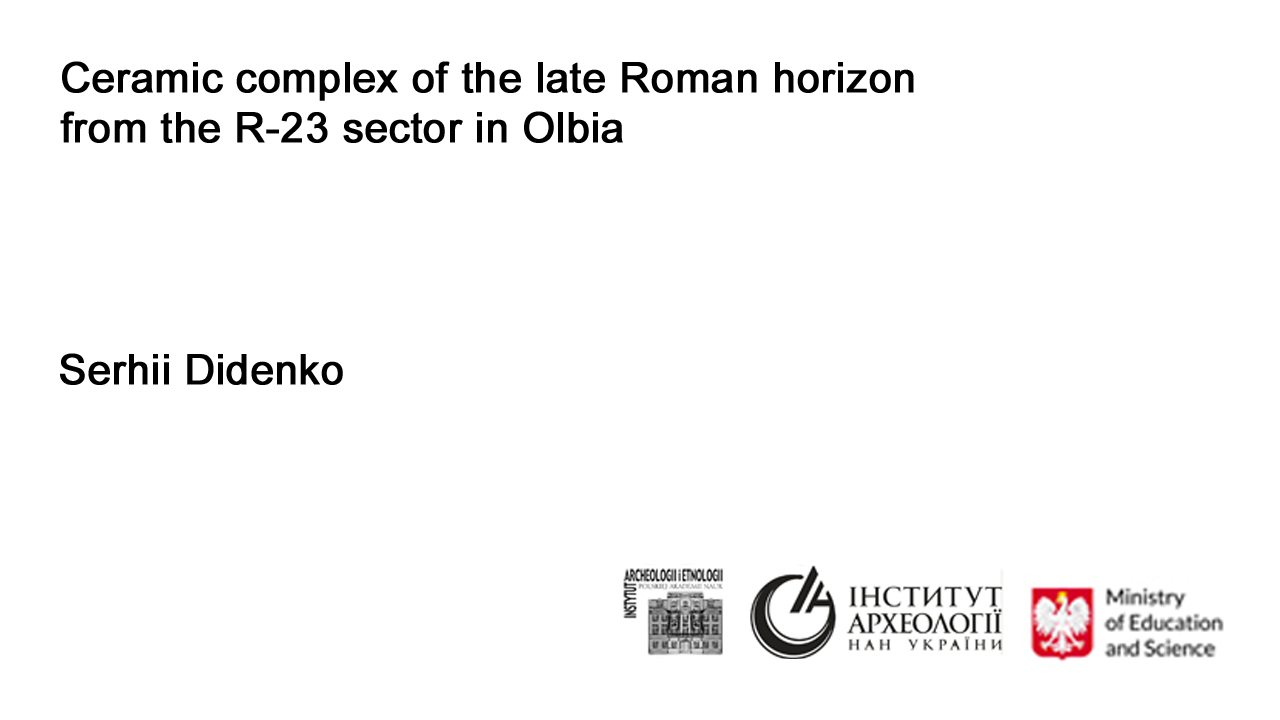
Na kanale Archeo.TV jest już dostępny 9 referat z konferencji "Olbia in Hunnic Period", która odbyła się 5-6 listopada 2021 roku ![]()
Institute of Archaeology and Ethnology of the Polish Academy of Sciences
and
Institute of Archaeology of the National Academy of Sciences of Ukraine
presents a lecture from a scientific conference:
Olbia in Hunnic Period
organized at November 5–6, 2022
Author: Serhii Didenko
Title: Ceramic complex of the late Roman horizon from the R-23 sector in Olbia
Abstract:
The excavations in 2016–2018, 2021 in the southeastern part of the Olbia citadel (sector R-23), carried out within the Ukrainian–Polish project of the Institute of Archeology of the National Academy of Sciences of Ukraine, the National Museum of Warsaw, and the Institute of Archeology and Ethnology of the Polish Academy of Sciences, revealed interesting contexts related to the latest antique layer of the site.
The Late Antique ceramic complex of this sector includes fragments of amphorae, red-slipped wares, wheel-thrown gray-clay pottery and handmade pottery dating from the 4th century AD and possibly later.
Four types of amphora containers were distinguished: 1) amphorae from Heraclea, types F and E according to D. Shelov’s typology; 2) Sinope amphorae type 100 according to I. Zeest; 3) Northern Pontic amphorae type Kharax, burial 33 according to A. Abramov; 4) Eastern Mediterranean amphorae of the LRA 1 Benghazi type according to J. Riley. There were also some amphorae from unidentified centers.
The red-slipped wares included Pontic Red Slip Ware (Domżalski forms 1, 2) and Pontic Red Slip Ware (Hayes forms 50, 67).
Wheel-thrown gray-clay pottery is subdivided into three classes: dining (bowls and vases), cooking (pots), and storage (large storage vessels). This category of the material has the closest parallels in the Chernyakhiv/Sântana de Mureș Culture, which was distributed on the territory of the Ukrainian Forest-steppe, the North-Western Black Sea region, Moldova, and Romania in the late Roman time.
Handmade pottery is represented by fragments of vessels typical for the Chernyakhiv culture. The fragment of the bowl made in the Germanic tradition deserves special attention.
A comprehensive analysis of the ceramic complex from the R-23 sector demonstrates close affinities with finds from Kiselov group sites of the Chernyakhiv culture in the territory of the North-Western Black Sea region.
Referat znajdziecie na YouTube, pod tym linkiem:
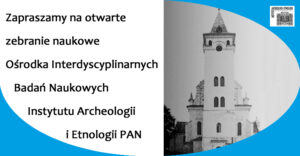
Zapraszamy na zebranie naukowe Ośrodka Interdyscyplinarnych Badań Naukowych IAE PAN
11 października 2022
Zbyszekcoments closed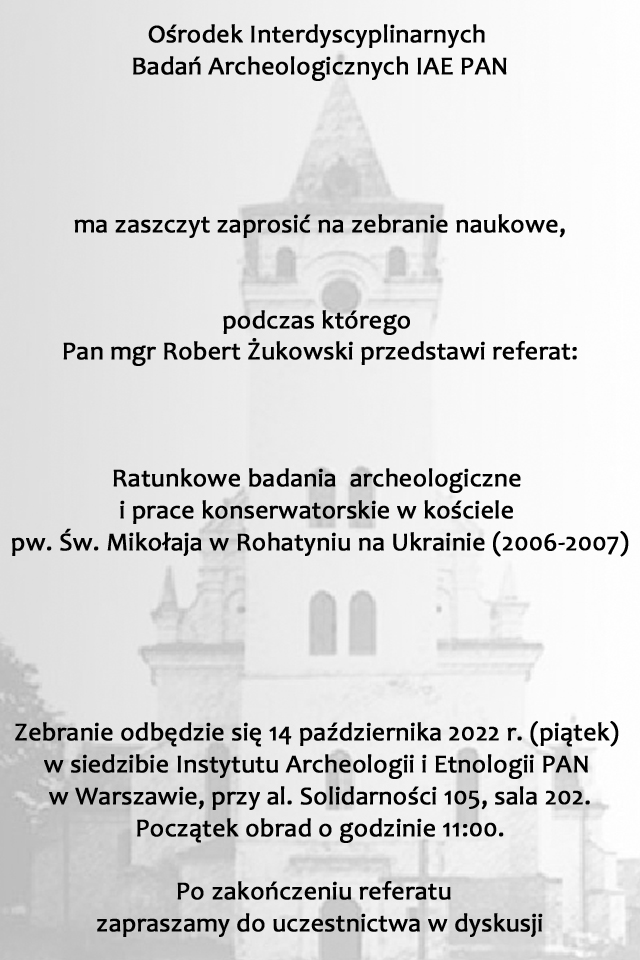
Już w najbliższy piątek (14 października) o godzinie 11.00 w budynku Instytut Archeologii i Etnologii PAN w Warszawie, odbędzie się zebranie naukowe Ośrodka Interdyscyplinarnych Badań Naukowych IAE PAN, na którym mgr Robert Żukowski przedstawi referat pod tytułem "Ratunkowe badania archeologiczne i prace konserwatorskie w kościele pw. Św. Mikołaja w Rohatyniu na Ukrainie (2006-2007)"
Zapraszamy do udziału !!!
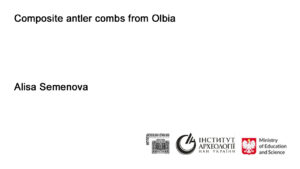
Alisa Semenova lecture from the conference “Olbia in the Hunnic period”
05 października 2022
Zbyszekcoments closed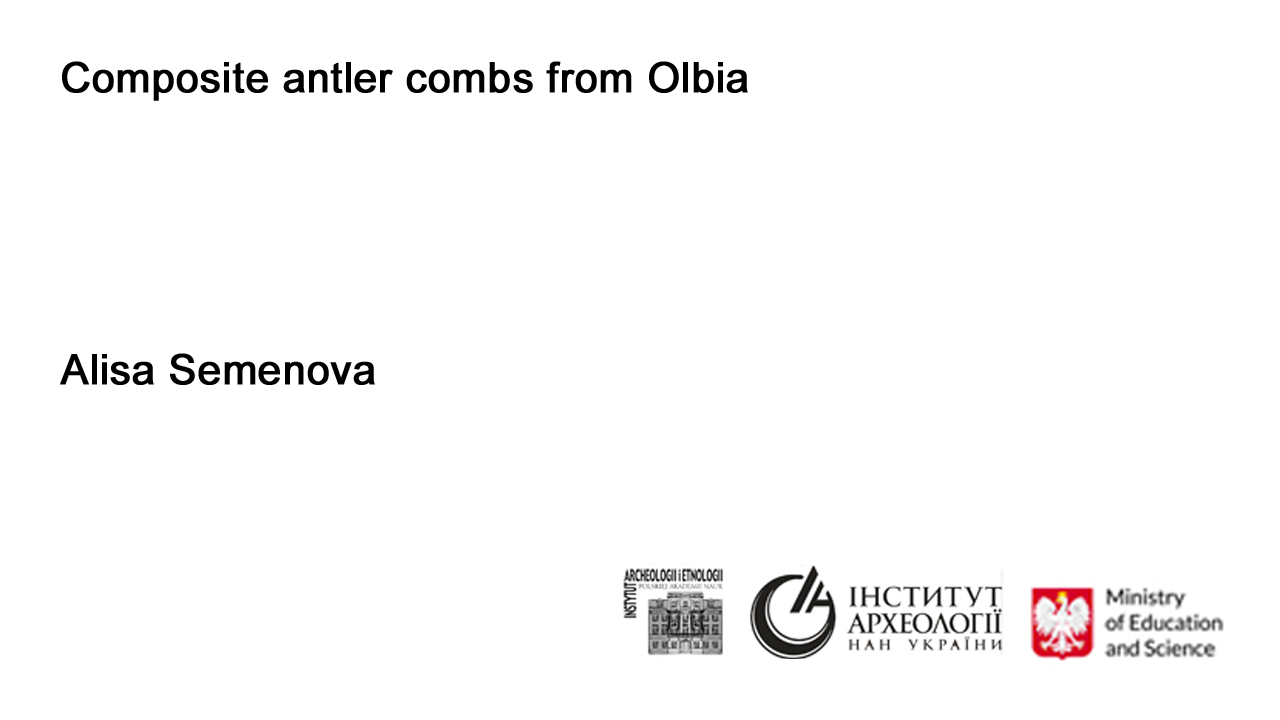
Na kanale Archeo.TV jest już dostępny 8 referat z konferencji "Olbia in Hunnic Period", która odbyła się 5-6 listopada 2021 roku ![]()
Institute of Archaeology and Ethnology of the Polish Academy of Sciences
and
Institute of Archaeology of the National Academy of Sciences of Ukraine
presents a lecture from a scientific conference:
Olbia in Hunnic Period
organized at November 5–6, 2021
Author: Alisa Semenova
Title: Composite antler combs from Olbia
Abstract: The paper concerns one-sided composite combs that are one of the categories of bone artefacts discovered at Olbia. Seven combs of the kind, made of antler and belonging in the Late Roman period, have been found in different sectors of the site. Two types were distinguished: the first being a single-sided three-partite comb with semicircular handle and the second a three-partite unilateral comb of bell-shape with semicircular handle. Composite combs have been studied extensively from the point of view of the typology, chronology and main stages of the production process. Based on their morphological characteristics, both types of combs can be described as “barbarian” forms of three-partite combs typical of the Chernyakhov−Sântana-de-Mureş Culture sites. Similar combs were also found in the other ancient cities of the North Black Sea region (Chersonesos and Panticapaeum among others). An analysis of bone artifacts, especially finds as interesting as these “barbarian” types of antler combs, could contribute to a greater understanding of the late Roman period in this territory.
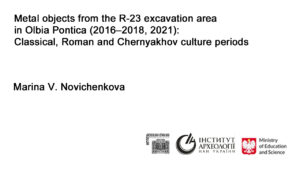
Maria V. Novichenkova lecture from the conference “Olbia in the Hunnic period”
07 września 2022
Zbyszekcoments closed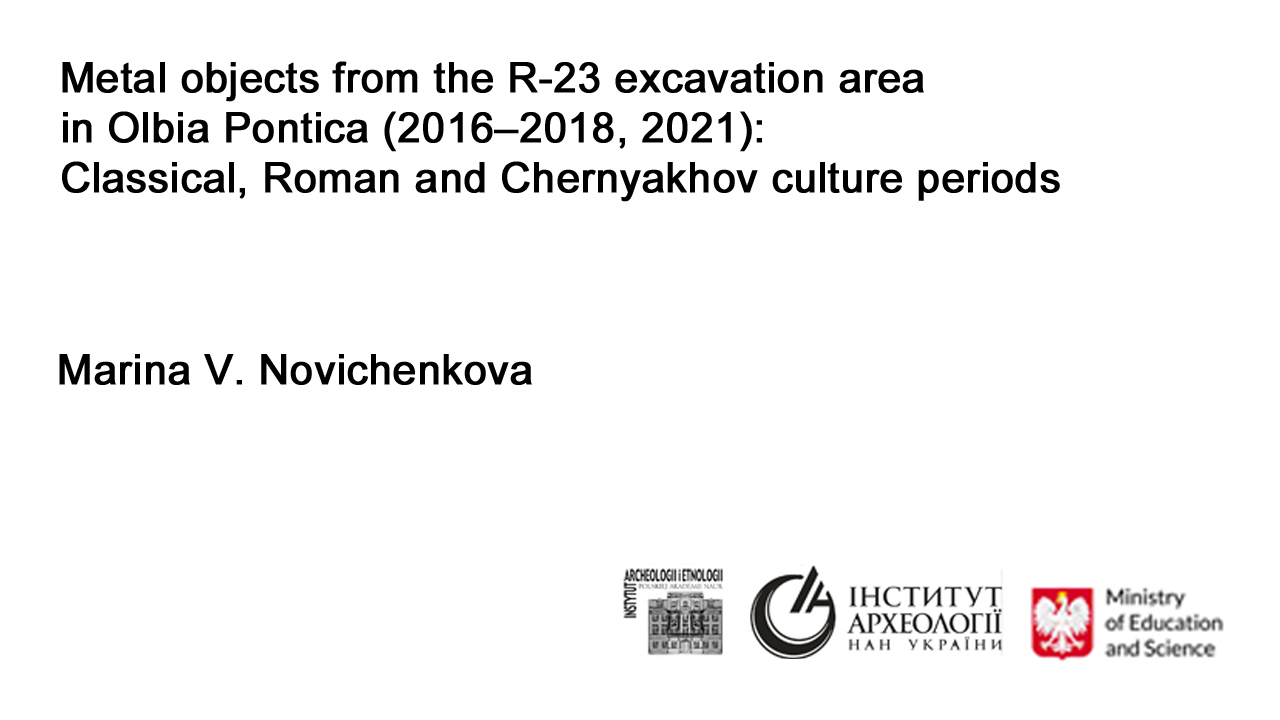

Współpraca z Berdyansk State Pedagogical University przy badaniach w Olbii
29 sierpnia 2022
Zbyszekcoments closed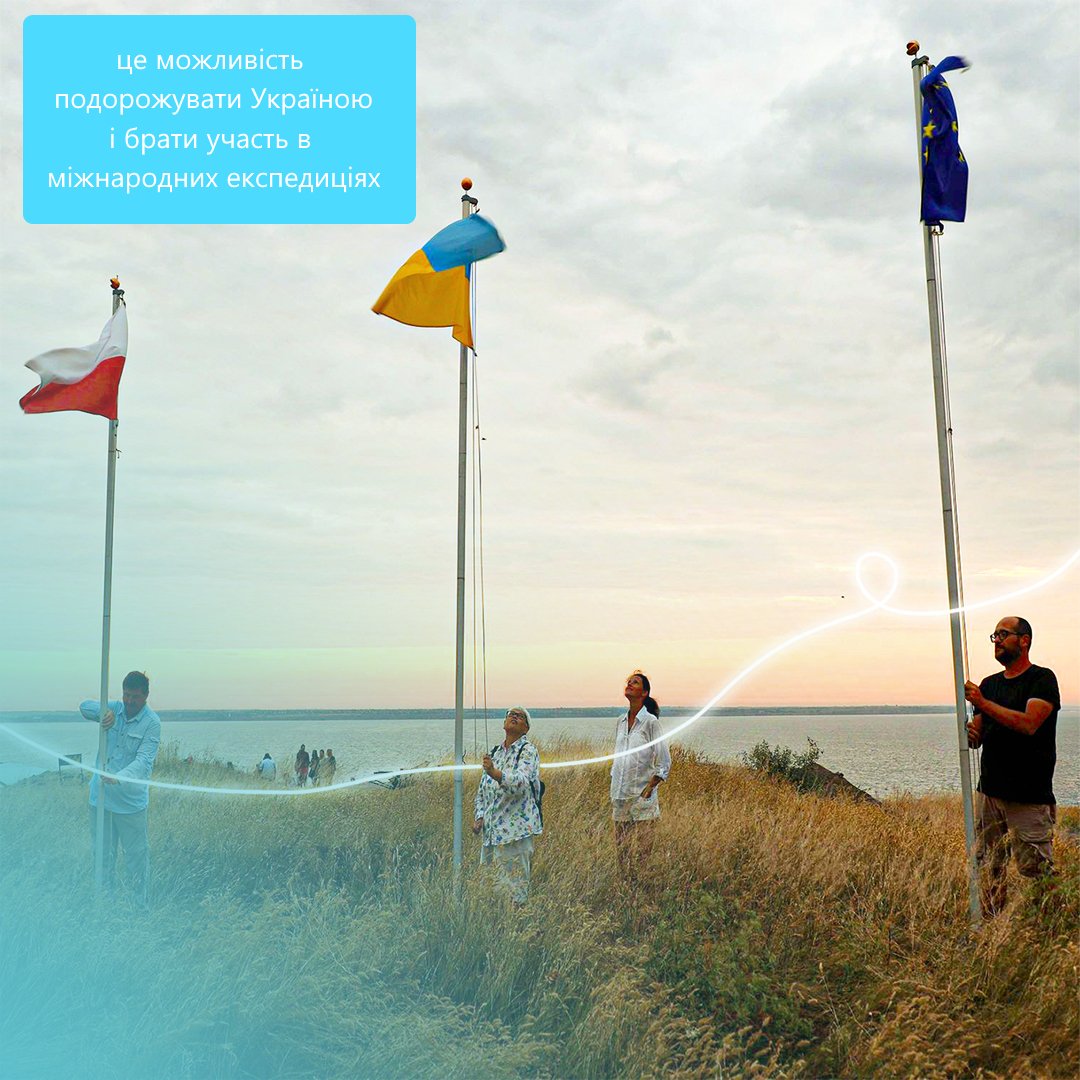
Więcej o badaniach w Olbii możecie przeczytać TUTAJ


